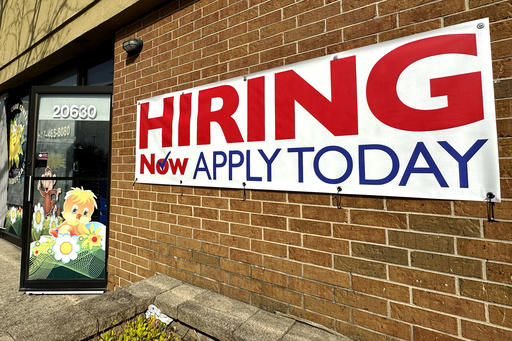NEW YORK (AP) — The Biden administration has finalized a new rule set to make millions of more salaried workers eligible for overtime pay in the U.S.
The move marks the largest expansion in federal overtime eligibility seen in decades. Starting July 1, employers will be required pay overtime to salaried workers who make less than $43,888 a year in certain executive, administrative and professional roles, the Labor Department said Tuesday. That cap will then rise to $58,656 by the start of 2025.
“Too often, lower-paid salaried workers are doing the same job as their hourly counterparts but are spending more time away from their families for no additional pay. That is unacceptable,” acting Secretary of Labor Julie Su said in a prepared statement.
She added that the administration was “following through on our promise to raise the bar.”
Tuesday’s news marks a significant jump from the current overtime eligibility threshold of $35,568, which was set under the Trump administration in 2019 — just three years after a more generous Obama-era effort was ultimately scuttled in court after facing pushback from some business leaders and Republican politicians.
Under the federal law, nearly all hourly workers in the U.S. are entitled to overtime pay after 40 hours a week. But many salaried workers are exempt from that requirement — unless they earn below a certain level.
The new rule also expands overtime eligibility for some highly-compensated workers. According to a Labor Department FAQ, the current $107,432 annual threshold for highly-compensated workers is set to increase to $132,964 on July 1 and $151,164 by the start of 2025.
The Labor Department estimates that 4 million lower-paid salary workers who are exempt under current regulations will become eligible for overtime protections in the first year under the new rule. An additional 292,900 higher-compensated workers are also expected to get overtime entitlements.
The July 1 increases update the current salary thresholds using methodology put in place under the Trump administration’s 2019 regulation. The new rule’s methodology takes effect Jan. 1, the Labor Department said, with salary thresholds set to update every three years based on the latest wage data.
The Biden administration first announced plans for its new rule in late August, and submitted a proposal in September. The Labor Department said it “conducted extensive engagement with employers, workers, unions and other stakeholders” and considered more than 33,000 comments as it developed the final rule.
Critics have argued that the new regulation could saddle companies with new costs and add to persistent labor challenges. In a statement, U.S. Rep. Virginia Foxx, a North Carolina Republican and chair of the House Education and the Workforce Committee, said that employers “are staring down the barrel of billions in annual costs to comply with the rule” while calling the regulation “excessive and heavy-handed.”
Meanwhile, advocates applauded the administration’s rule — with some noting that such a move is overdue. The left-leaning Economic Policy Institute says that the overtime threshold has not been updated properly for almost 50 years — leaving millions without such federal protections.
“The rule is an important step toward correctly valuing one of the most precious resources workers have — their time,” EPI president Heidi Shierholz said Tuesday. “This rule is an essential milestone in creating a stronger, fairer economy.”



